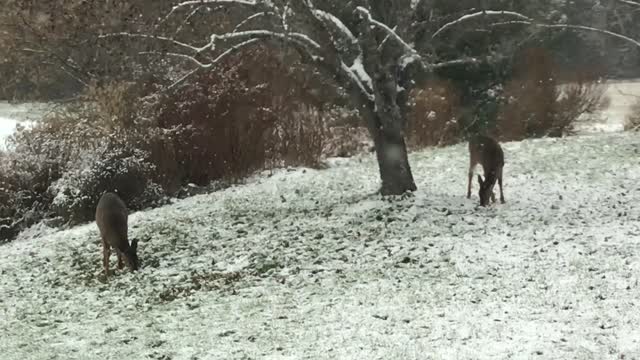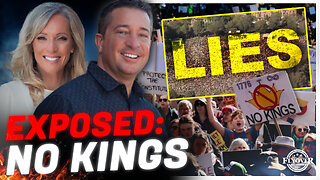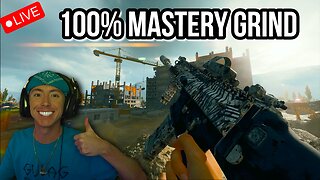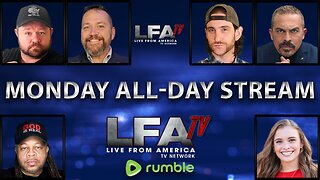Premium Only Content

Baby deer & mom frolic in first snow of the season
Such a beautiful sight to wake up to. This mom and 2 small fawns stopped out on my back property to feed on the apples and berries.
Here in New Hampshire, the white-tailed deer population is approximately 100,000 individuals. The areas of greatest densities are in the southern counties (Rockingham, Hillsborough, and Cheshire) and along the Connecticut River Valley (Grafton County). In 2014, the NH Fish and Game Department began the process of revising its 10-year management plan for white-tailed deer, moose, turkey, black bear, snowshoe hare, and ruffed grouse.
This document, called the NH Game Management Plan, spans the period of 2016 to 2025. Population level goals for deer were adjusted to more closely reflect current biological conditions and limitation, as well as public interests and concerns. These goals aim to stabilize the deer population in many areas of the state while increasing or reducing it in others.
Habits and Habitats
White-tailed deer can live in a variety of habitats, including farmlands, brushy areas, woods, mountains, and suburbs and gardens. They feed on green plants, including aquatic species in the summer, acorns, beechnuts, and corn in the fall, and woody vegetation, including buds and twigs of birch, maple and conifers in the winter. White-tailed deer will typically consume 5 to 9 pounds of food each day and find water from snow, dew and waterbodies.
Individual deer group into two types of social combinations. These include the family group, with a doe and her young, and the buck group. The family group will stay together for approximately a year. Buck groups are structured with a dominance hierarchy of 3 to 5 individuals. Bucks will challenge each other with stares, lowered ears, kicking, sparring (physically pushing each other back), and less commonly, thrashing of forefeet.
During the winter, these two deer groups may come together, forming communities of up to 150 individuals in locations called “yards.” This unification keeps trails open and accessible for feeding and also provides protection from predators. However, there have been problems with humans providing supplementary feed sites for deer in the winter. These sites can cause unnaturally high densities of congregated deer that attract predators, increase the risk of disease transmission, increase aggression within the community, and lead to over-browsing of local vegetation and more deer-vehicle collisions. They cause deer to be more dependent on humans and artificial food sources that provide few benefits.
-
 3:03:39
3:03:39
Barry Cunningham
6 hours agoPRESIDENT TRUMP HAS A MAJOR WIN AND HIS TEAM IS ABSOLUTELY UNLEASHED!
67922 -
 58:59
58:59
Flyover Conservatives
23 hours agoThe Agenda Behind No Kings — They Lied. They Funded It.; Silver Explosion FAR from Over, PhD Explains What’s Next and Why! - Dr. Kirk Elliott | FOC Show
4.53K3 -
 1:55:03
1:55:03
We Like Shooting
15 hours agoWe Like Shooting 633 (Gun Podcast)
106 -
 1:32:29
1:32:29
Glenn Greenwald
7 hours agoNo Kings Protests: A Partisan Pro-DNC Circus; The Trump Admin's Escalating Strikes on "Drug Boats" and Militarization of the Caribbean | SYSTEM UPDATE #534
17.4K66 -
 3:49:31
3:49:31
SOLTEKGG
4 hours ago🔴LIVE - BATTLEFIELD 6 W/ SOLTEK
-
 LIVE
LIVE
VapinGamers
3 hours agoBattlefield 6 - Gettin My Body Ready for BR and Other Funzies with Friends - !rumbot !music
193 watching -
 41:43
41:43
MattMorseTV
5 hours ago🔴It’s ACTUALLY HAPPENING…🔴
3.65K80 -
 LIVE
LIVE
Putther
3 hours ago🔴LIL WILLY RETURNS TO GTA RP
105 watching -
 LIVE
LIVE
Reidboyy
9 hours agoCamo King Grinds 100% Completion for Battlefield 6 *SECRET* Mastery Camo (All Badges + Camos 100%)
9 watching -
 12:21:32
12:21:32
LFA TV
1 day agoLIVE & BREAKING NEWS! | MONDAY 10/20/25
163K32